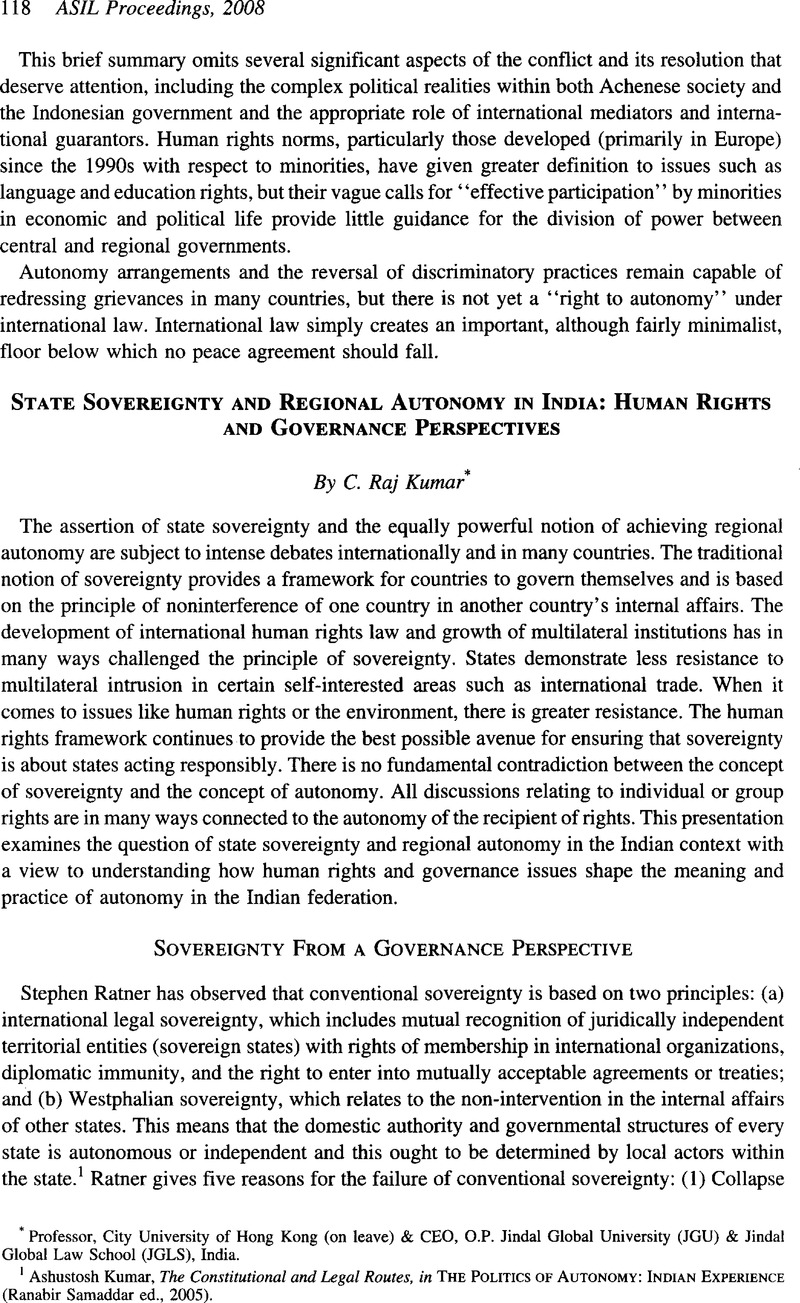No CrossRef data available.
Article contents
State Sovereignty and Regional Autonomy in India: Human Rights and Governance Perspectives
Published online by Cambridge University Press: 28 February 2017
Abstract

- Type
- State Sovereignty and Regional Autonomy: The Asian Experience
- Information
- Copyright
- Copyright © American Society of International Law 2008
References
1 Kumar, Ashustosh, The Constitutional and Legal Routes, in The Politics of Autonomy: Indian Experience (Samaddar, Ranabir ed., 2005)Google Scholar.
2 See Alexander King & Bertrand Schneider, The First Global Revolution: A Retort of the Council of Rome, 181-182 (1991).
3 Kumar, supra note 1, at 94.
4 Id.
5 See id. at 96.
6 See A.G. Noorani, Article 370: Law and Politics, Frontline, Sep. 16-29, 2000.
7 Id.
8 Kumar, supra note 1, at 98.
9 See id. at 96.
10 See id. at 99.
11 Shubhangi Pathak, Nature of the Indian Constitution: Judicial Exposition, <http.V/www.legalservicesindia.com/articles/clonst.htm> (last visited May 24, 2008).
12 Id.




